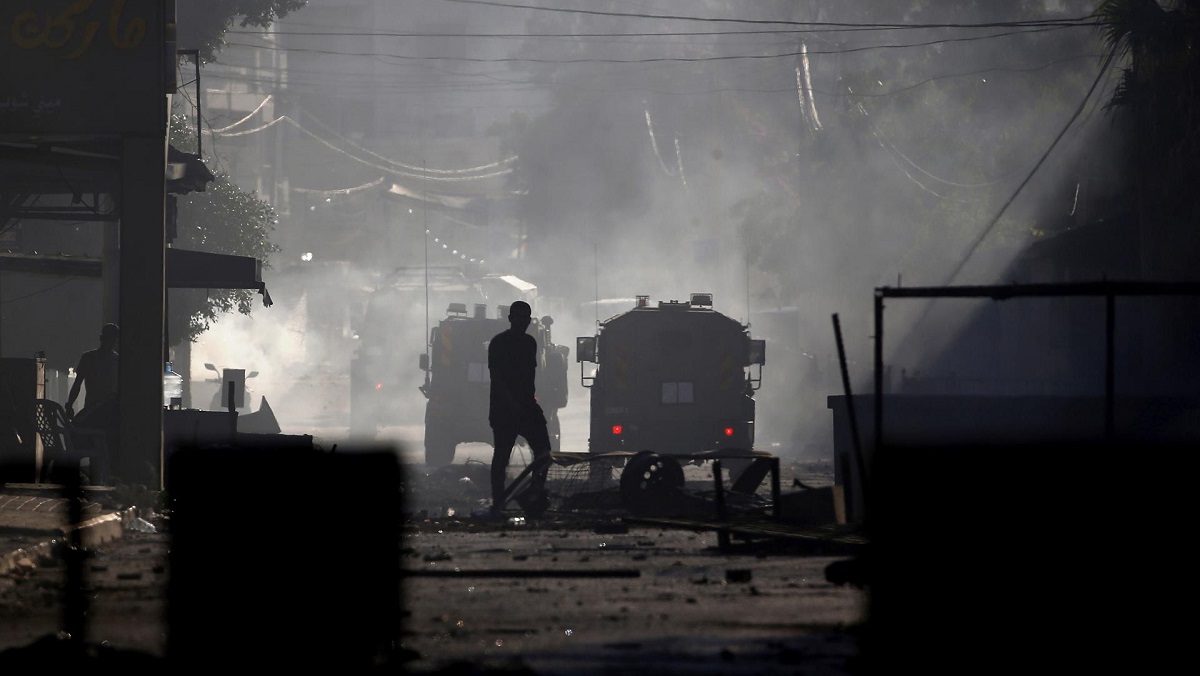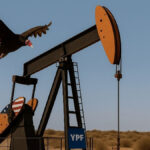
The Jenin refugee camp in the northern West Bank is a permanent reminder of the brutality with which Israel forced its way onto Palestinian soil by expelling the Arab population, in what the Israeli historian Ilan Pappé calls flatly an ethnic cleansing. On the same day that Israel celebrates the founding of their State in 1948, Palestinians remember the Nakba (catastrophe) that meant the expulsion and massacre of their people, which continues to this day.
Millions of Palestinians had to leave their land and flee to other countries. A few thousand settled in Jenin, where today there are around 20,000 Palestinians crammed into a territory of half a square kilometer. The refugee camp was always a symbol of Palestinian resistance, first to the expulsion from their own lands and then to Israel’s occupation of the West Bank after the Six Day War in 1967.
For this reason, the refugee camp has become a key objective for the State of Israel, which this week launched a brutal attack by land and air the like of which has not been seen in the last 20 years, since the second Palestinian intifada in 2000, leaving at least 10 Palestinians killed.
This attack is combined with a general offensive towards the occupied West Bank that includes permanent raids by the Israeli Army on Palestinian cities, where Jenin and Nablus are the most attacked, pogroms by Jewish settlers who enter Palestinian towns and attack their inhabitants. and their homes and cars -with the approval of the military-, and the recent announcement of the construction of new settler settlements. While a fraction of Netanyahu’s government coalition flirts directly with an annexation of the West Bank, the provocations of the conservative and right-wing government are completed with attacks on the Arab population of East Jerusalem, also occupied, and recurrent bombardments on the Gaza Strip.
The resistance in Jenin
The Jenin refugee camp was created in 1953. Before the occupation of the West Bank by Israel in 1967, there were just over 8,000 people, the majority Palestinians who were displaced from their land in 1948. Today, according to the agency of the United Nations for the Palestinian refugee population (UNRWA), houses around 20,000.
During the Second Palestinian Intifada, in April 2002 the Israeli Army entered the city, declaring the Jenin camp a military zone and closing its accesses. The occupation lasted 10 days during which dozens of Palestinians were killed.
Residents of the camp suffer from one of the highest rates of unemployment and poverty in the West Bank, which have worsened since Israel revoked work permits for its inhabitants and tightened security controls on access to the area, preventing the local population from sell their products, mostly from agriculture.
This situation especially hits young people, who are affected by unemployment, deficient infrastructure and the permanent incursions by the colonialist Army, while they see the Palestinian Authority as an appendage of the Israeli occupation.

This combo has caused a growing discontent among the youth who have been taking center stage in the protests of recent years as well as in resisting the attacks. In the case of Jenin, and also in Nablus, militias have appeared that are not necessarily aligned with traditional organizations such as Hamas or Islamic Jihad. Some of these new organizations are grouped in the so-called Jenin Brigade or in the Lions Den (Lions Den or Den), which have become one of the main targets of attacks by the Israeli Army.
The emergence of these organizations is combined with a series of strikes launched by the Palestinians in recent years, some of which managed to unify the population of the West Bank, Gaza, East Jerusalem and the Arabs living in Israeli cities, as was not the case in decades.
The newest element in the dissatisfaction of this new generation of youth is that they do not see the Palestinian Authority and Fatah as their leadership, but as openly collaborative with the State of Israel, and they also do not trust the impotent methods and politics of Hamas. from the Gaza Strip. And this occurs in the midst of a deep crisis in the Israeli political regime.
The far-right coalition headed by Netanyahu is the latest experiment in a series of disgraced governments, within the framework of an increasingly fragmented Parliament, into which new conservative, ultra-Orthodox and far-right forces have slipped, pushing the whole of the political agenda to the extreme, both in its colonial and apartheid state traits and in its bonapartism. The judicial reform and the mobilizations to stop it are part of the internal contradictions and frictions, which are added to a growing discredit at the international level.
Jenin thus appears as a symbol. A powerful symbol that the colonialist state seeks to crush because it represents in a concentrated form both the founding tragedy and a history of resistance that does not stop.
Source: www.laizquierdadiario.com

